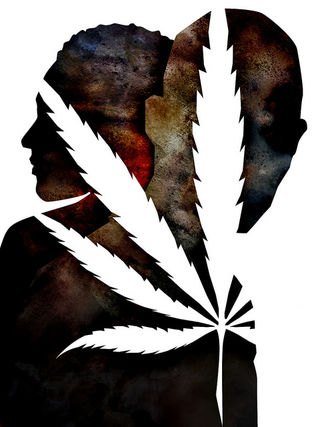Alcoholism
Marijuana: The Gateway Drug Myth
Science shows overwhelmingly that marijuana is not a gateway drug.
Posted August 26, 2014 Reviewed by Davia Sills

Marijuana continues to be the most commonly used illicit drug according to the 2012 National Survey on Drug Use and Health (NSDUH) report. It is also the third most popular recreational drug in the United States, behind alcohol and tobacco. Based on the latest estimates, upwards of 24 million people have used marijuana, with 14 million using it regularly, yet misinformation about marijuana abounds.
Marijuana is not a gateway drug. People who have tried marijuana may eventually go on to try harder drugs in search of a stronger high, and experimentation may lead them down a dangerous path toward addiction. However, the science shows overwhelmingly that for most people, marijuana is not a gateway drug.
Many people mistakenly believe that marijuana use precedes rather than follows the initiation of other illicit drug use. In fact, most drug use begins with alcohol and nicotine before marijuana, making nicotine and alcohol the two most common drugs of abuse. Evidence indicates marijuana is usually not the first substance abused before more dangerous illicit drug experimentation.
A study published in the peer-reviewed Journal of School Health has concluded that the theory of a gateway drug is not associated with marijuana, but rather one of the most damaging and socially accepted drugs in the world: alcohol. The findings from this investigation support that alcohol should receive primary attention in abuse prevention programming since the use of other substances could be impacted by delaying or preventing alcohol use.
An alternative gateway may just be the trials and tribulations some kids face while growing up. According to Dr. Karen Van Gundy, an associate professor of sociology at the University of New Hampshire,
“Whether marijuana smokers go on to use other illicit drugs depends more on social factors like being exposed to stress and being unemployed, not so much whether they smoked a joint in the eighth grade. Because underage smoking and alcohol use typically precede marijuana use, marijuana is not the most common, and is rarely the first illicit drug used.”
This isn’t to say that marijuana is safe or that its use among teens and young adults should be ignored; quite the contrary. Marijuana use should be a focus of substance abuse prevention programs, but we need to tell kids the truth, not attempt to scare them with myths.
The problem with marijuana use at an early age is that the human brain is still developing. Using marijuana before the age of 25 can lead to irreversible issues, such as low impulse control and memory problems. Of course, young people can’t quite grasp the severity of these types of consequences, so it is up to adults to do their best to be a protective buffer and help young people make better choices.
It is important to note that while drugs like alcohol could and do indeed lead to other harmful substance abuse, the main issue with drug problems is the mental state of the user. Some people use drugs to escape reality and run away from problems they do not have the skills to cope with in more healthful ways.


